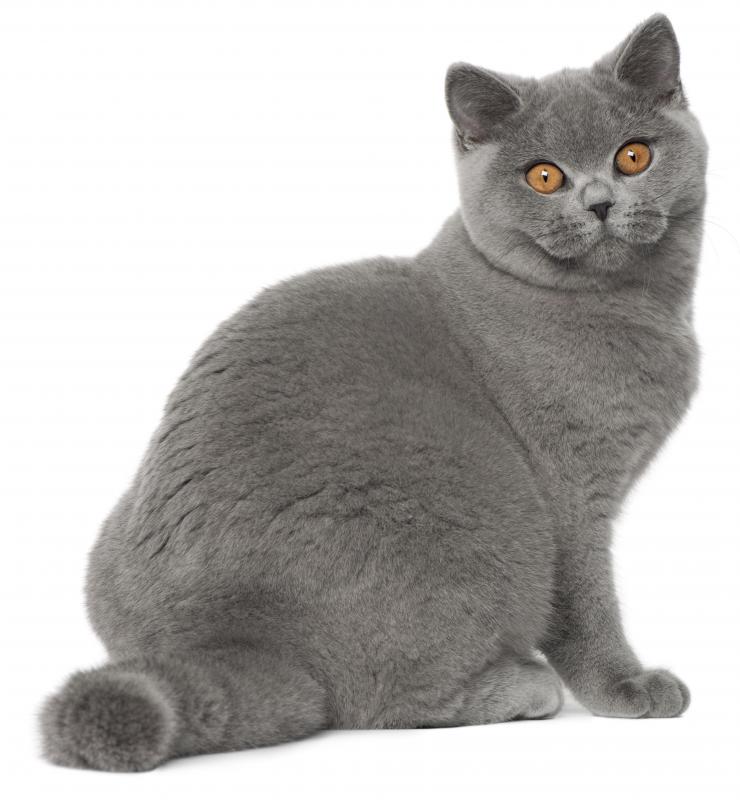At AllThingsNature, we're committed to delivering accurate, trustworthy information. Our expert-authored content is rigorously fact-checked and sourced from credible authorities. Discover how we uphold the highest standards in providing you with reliable knowledge.
Are There Hypoallergenic Pets?
There are some pet breeds which appear to be less likely to evoke allergic responses, although there is some debate over whether these breeds are truly hypoallergenic or not. Breeds touted as options for people who want hypoallergenic pets appear to be more likely to be tolerated by people with pet allergies, although some doctors have suggested that this may have more to do with individual people and pets than with entire breeds. For people who want pets but struggle with allergies, it is certainly worthwhile to start with hypoallergenic breeds, but it may take some time to find the right pet.
Pet allergies appear to be caused by dander, the dead skin and hair shed by animals on a regular basis. Some theorists say that proteins in the dander cause allergies, while others have suggested that proteins in animal saliva are responsible; since pets groom themselves with their saliva, the saliva adheres to the dander. Hypoallergenic pets generally have less hair and shed less than other breeds, and some may lack the allergy-causing proteins.

It is important to be aware that the prefix “hypo” means “less,” so when something is said to be “hypoallergenic,” it just means that it is less likely to cause allergies, rather than being allergen-free. For people with very severe allergies, a supposedly hypoallergenic animal can still evoke a reaction which may vary from skin irritation to respiratory distress.

When people think of hypoallergenic pets, they usually mean cats and dogs. Several cat breeds are supposed to be hypoallergenic, including the Javanese, Oriental Shorthair, Russian Blue, and Balinese breeds from Asia, along with the Cornish and Devon Rex breeds. Among dogs, terriers, poodles, and greyhounds appear to be less likely to cause allergies, along with the bearded collie, Affenpinscher, Pomeranian, Basenji, and Bichon Frise. Many of these breeds are recommended to people with allergies who want pets.

People who are looking for hypoallergenic pets may want to consider getting allergy testing, if they have not done so already. Allergy testing is used to pinpoint the cause of an allergy, and it can confirm that a pet allergy really exists. If a pet allergy does indeed exist, the allergy testing can provide additional information about how severe the allergy is. When going to see a potential pet, the animal should be seen outside, or in an area which is not frequented by other animals, so that the allergy sufferer can see if he or she reacts to the animal's dander.

To reduce the risk of experiencing allergic reactions, it is a good idea to bathe a hypoallergenic pet on a regular basis in a hypoallergenic pet shampoo, which will cut down on dander. It is also advisable to ban the animal from the bedroom, and from furniture like the couch, to avoid accumulations of hair and dander which could trigger allergies.
For people with severe allergies to furry friends, there are some alternative pets to consider. Reptiles and fish generally do not cause allergies, and they can make very interesting, engaging, and entertaining pets.
Frequently Asked Questions
What does 'hypoallergenic' mean when referring to pets?

'Hypoallergenic' refers to pets that are less likely to cause allergic reactions in humans. These animals typically produce fewer allergens, which are the proteins that trigger allergy symptoms. While no pet is completely allergen-free, hypoallergenic breeds may produce less dander, saliva, or urine, which are common sources of allergens.
Can people with allergies have hypoallergenic dogs or cats?
Yes, people with allergies can often coexist more comfortably with hypoallergenic dog or cat breeds. These breeds are known to produce fewer allergens than others. For instance, the Poodle and Bichon Frise are considered hypoallergenic dogs, while the Siberian and Balinese are among the hypoallergenic cat breeds. However, individual reactions to a specific animal can vary.
Are there hypoallergenic pet breeds that are better for families?
Certain hypoallergenic pet breeds are known for their friendly disposition and suitability for families. The Labradoodle, a cross between a Labrador Retriever and a Poodle, is often recommended for families due to its friendly nature and lower allergen production. Similarly, the Cornish Rex cat, with its soft, curly coat, is less likely to shed dander and is known for being playful and affectionate with children.
How can I reduce allergens if I have a pet that is not hypoallergenic?
To reduce allergens with non-hypoallergenic pets, frequent cleaning is essential. This includes vacuuming with HEPA filters, washing pet bedding regularly, and using air purifiers. Bathing your pet weekly can also help minimize dander. Additionally, creating an 'allergy-free' zone, typically the bedroom, where the pet is not allowed can provide a respite for allergy sufferers.
What other types of pets are considered hypoallergenic?
Beyond cats and dogs, other hypoallergenic pets include reptiles and fish, as they do not produce dander. Small mammals like rabbits or guinea pigs may be less allergenic but can still cause reactions due to fur and proteins in their urine. Always spend time with an animal before adopting to ensure compatibility with your allergies.
Is it possible to build up a tolerance to pet allergens over time?
Some individuals may develop a tolerance to pet allergens over time through repeated exposure, but this is not guaranteed. According to immunologists, gradual exposure can sometimes lead to desensitization. However, this process is unpredictable and should be approached cautiously, ideally under medical supervision, as it can also exacerbate symptoms in some cases.
AS FEATURED ON:
AS FEATURED ON:















Discussion Comments
@pastanaga - I don't know if there are any bare dogs, but there are dogs that don't really shed. There are dogs that grow their hair out in dread-like curls, for example. Or any dog with a long coat will shed less as long as you brush and groom it regularly because the hair takes a long time to grow and fall.
@irontoenail - I actually think people would be more likely to find a suitable cat because you can get cats that have no long hair at all and they must be much easier on allergies than normal cats (if they set them off at all).
Although I have found that the times when I can't have pets (usually because of housing, not because I'm allergic) I've felt better if I was volunteering at a shelter anyway, because I got to have a lot of contact with the animals. I imagine if you don't want to take antihistamines all the time, you could take them once a week and go in to play with the kittens and puppies or walk the dogs as a volunteer. Then you'd be doing your good deed for the week as well.
I would try going to local breeders and see if you can figure out which dogs set off your allergies and which do not. It might be difficult to determine this at a shelter, but if you can, I would try there too, because hybrid dogs might be a better bet.
I've known a few people who have managed to find a dog type that doesn't set off their allergies, or at least, is tolerable to them. I haven't heard of the same thing in cats, but I imagine hypoallergenic cats exist for a lot of people as well.
Post your comments